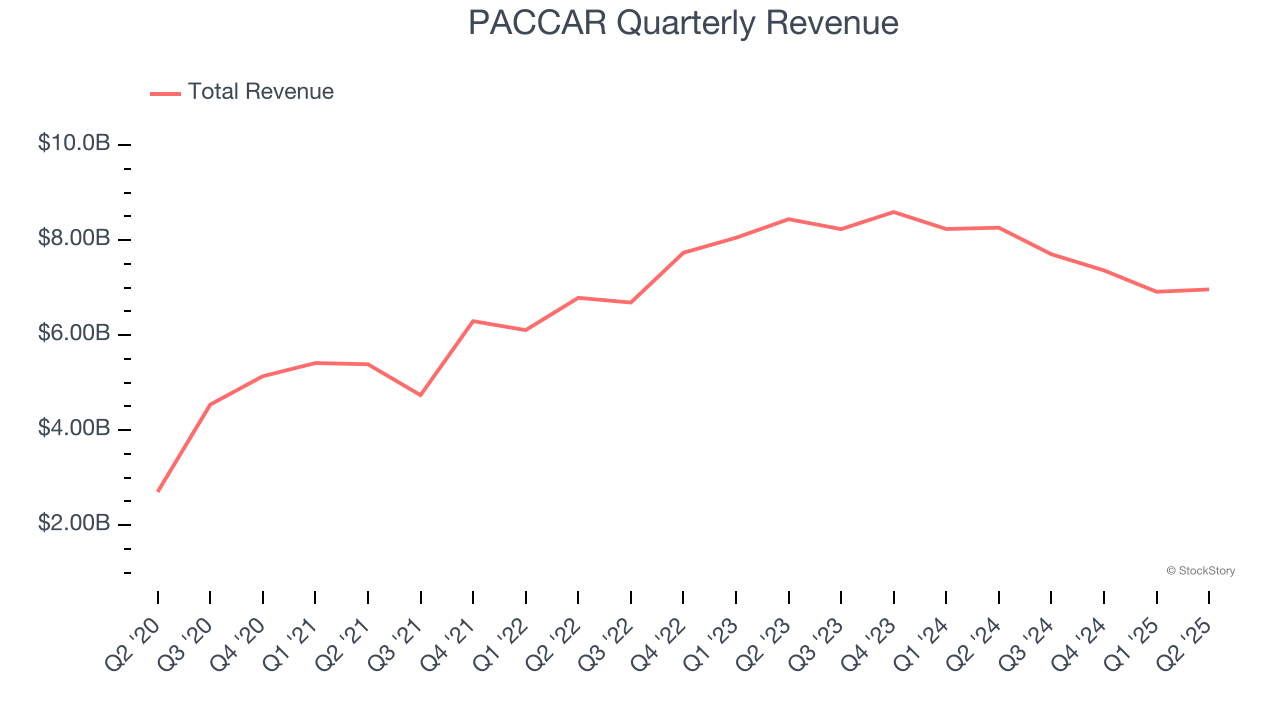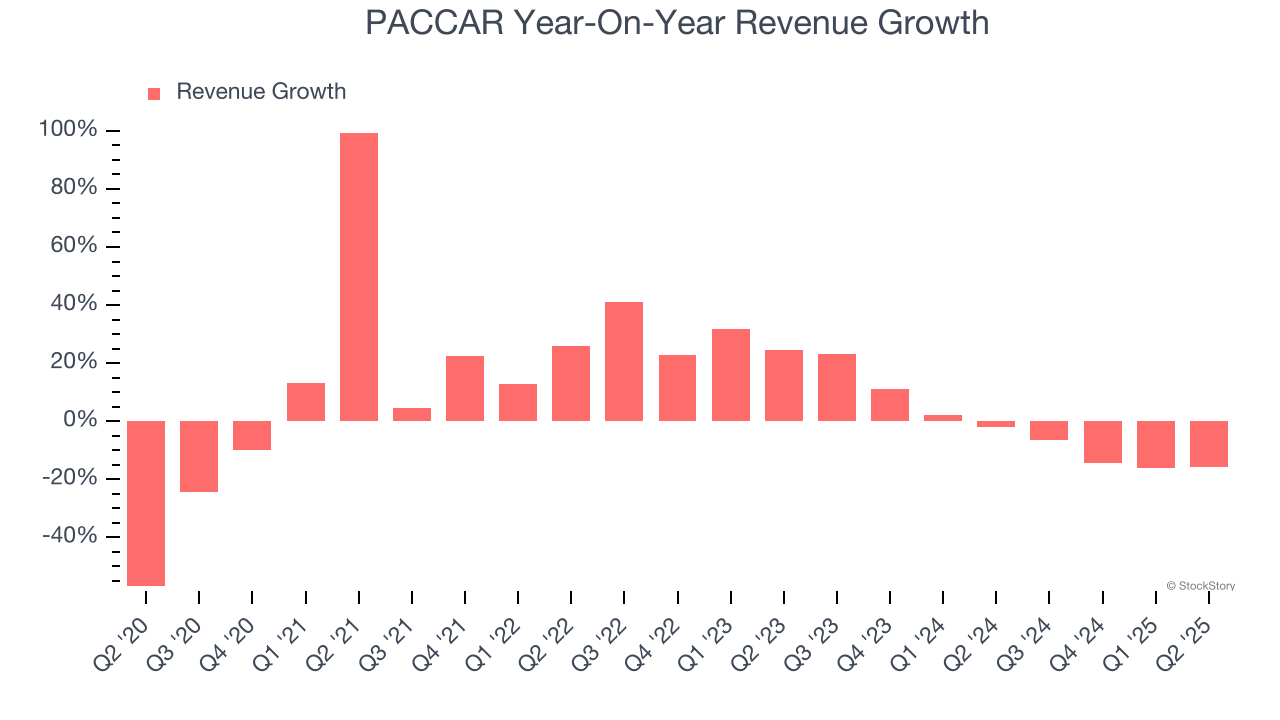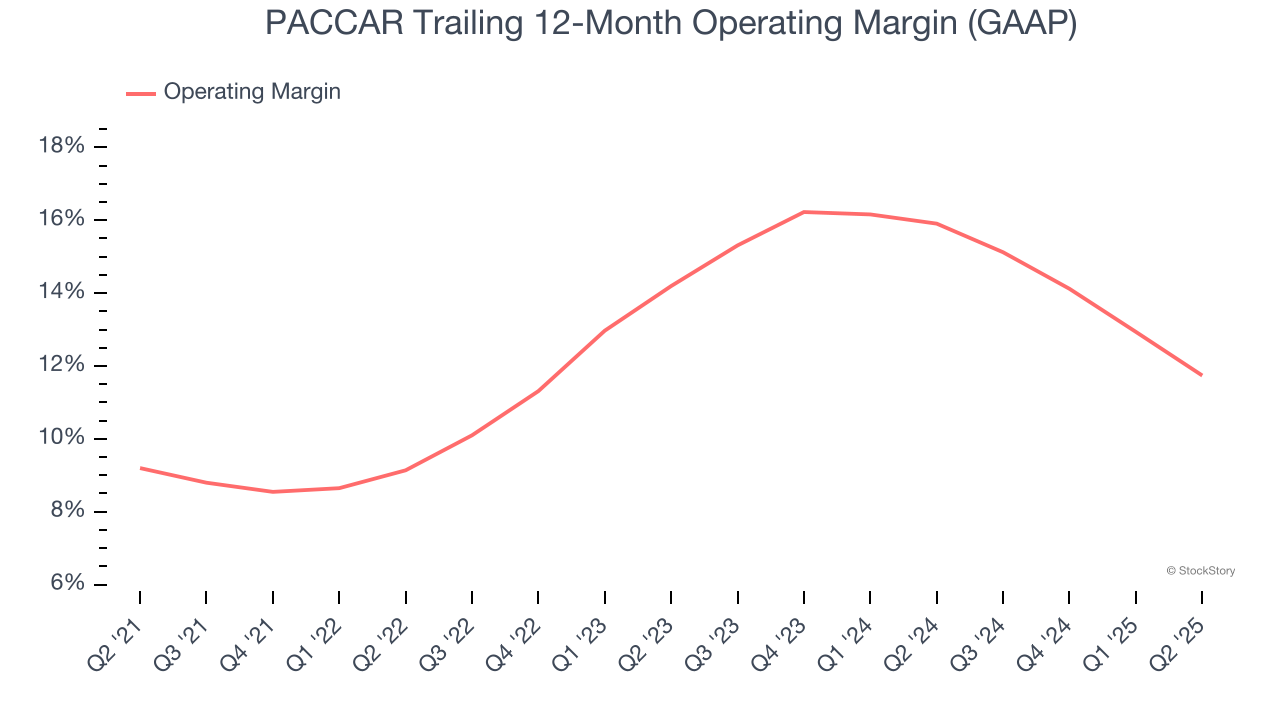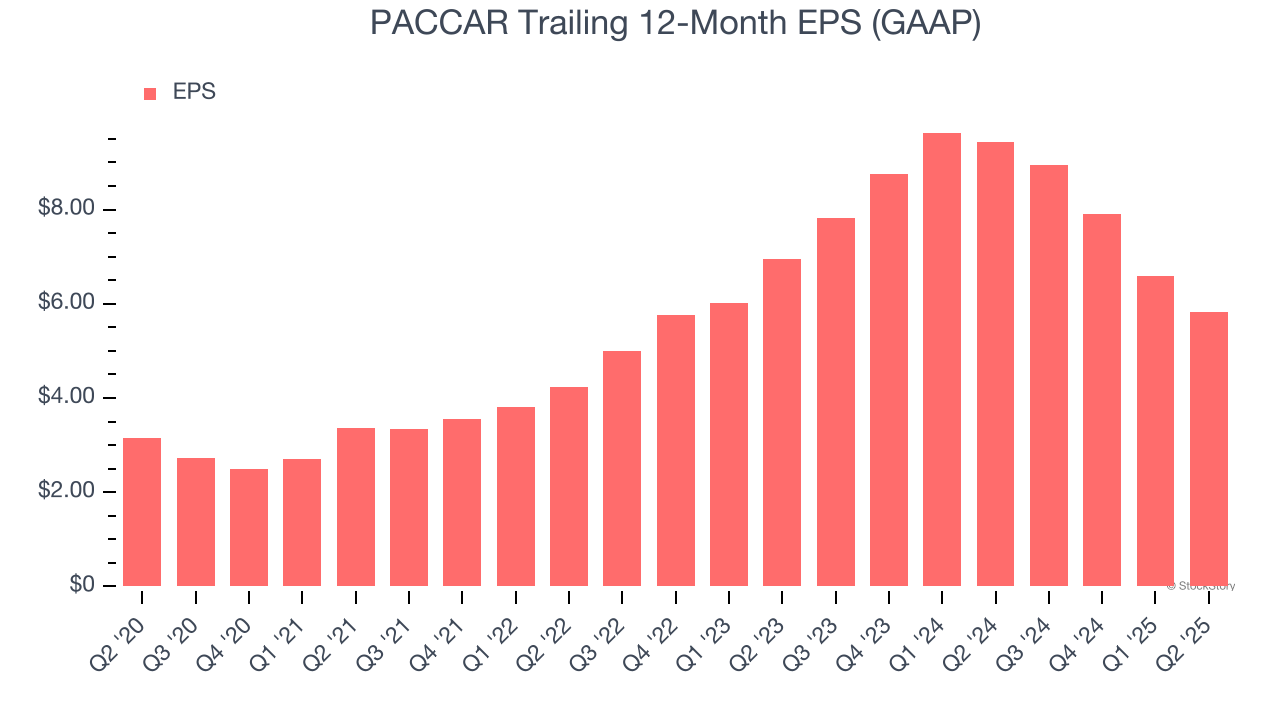
Trucking company PACCAR (NASDAQ:PCAR) reported Q2 CY2025 results beating Wall Street’s revenue expectations, but sales fell by 15.7% year on year to $6.96 billion. Its GAAP profit of $1.37 per share was 4.2% above analysts’ consensus estimates.
Is now the time to buy PACCAR? Find out by accessing our full research report, it’s free.
PACCAR (PCAR) Q2 CY2025 Highlights:
- Revenue: $6.96 billion vs analyst estimates of $6.79 billion (15.7% year-on-year decline, 2.6% beat)
- EPS (GAAP): $1.37 vs analyst estimates of $1.31 (4.2% beat)
- Operating Margin: 10.3%, down from 14.9% in the same quarter last year
- Free Cash Flow Margin: 8.8%, up from 2.7% in the same quarter last year
- Market Capitalization: $48.77 billion
BELLEVUE, Wash.--(BUSINESS WIRE)--“PACCAR reported good revenues and net income in the first quarter of 2025,” said Preston Feight, chief executive officer.
Company Overview
Founded more than a century ago, PACCAR (NASDAQ:PCAR) designs and manufactures commercial trucks of various weights and sizes for the commercial trucking industry.
Revenue Growth
A company’s long-term sales performance can indicate its overall quality. Any business can put up a good quarter or two, but the best consistently grow over the long haul. Thankfully, PACCAR’s 8.6% annualized revenue growth over the last five years was decent. Its growth was slightly above the average industrials company and shows its offerings resonate with customers.

Long-term growth is the most important, but within industrials, a half-decade historical view may miss new industry trends or demand cycles. PACCAR’s recent performance marks a sharp pivot from its five-year trend as its revenue has shown annualized declines of 3.2% over the last two years. PACCAR isn’t alone in its struggles as the Heavy Transportation Equipment industry experienced a cyclical downturn, with many similar businesses observing lower sales at this time. 
This quarter, PACCAR’s revenue fell by 15.7% year on year to $6.96 billion but beat Wall Street’s estimates by 2.6%.
Looking ahead, sell-side analysts expect revenue to decline by 5% over the next 12 months, a slight deceleration versus the last two years. This projection is underwhelming and suggests its products and services will face some demand challenges.
Here at StockStory, we certainly understand the potential of thematic investing. Diverse winners from Microsoft (MSFT) to Alphabet (GOOG), Coca-Cola (KO) to Monster Beverage (MNST) could all have been identified as promising growth stories with a megatrend driving the growth. So, in that spirit, we’ve identified a relatively under-the-radar profitable growth stock benefiting from the rise of AI, available to you FREE via this link.
Operating Margin
PACCAR has been an efficient company over the last five years. It was one of the more profitable businesses in the industrials sector, boasting an average operating margin of 12.5%.
Looking at the trend in its profitability, PACCAR’s operating margin rose by 2.5 percentage points over the last five years, as its sales growth gave it operating leverage.

This quarter, PACCAR generated an operating margin profit margin of 10.3%, down 4.6 percentage points year on year. This contraction shows it was less efficient because its expenses increased relative to its revenue.
Earnings Per Share
Revenue trends explain a company’s historical growth, but the long-term change in earnings per share (EPS) points to the profitability of that growth – for example, a company could inflate its sales through excessive spending on advertising and promotions.
PACCAR’s EPS grew at a remarkable 13.1% compounded annual growth rate over the last five years, higher than its 8.6% annualized revenue growth. This tells us the company became more profitable on a per-share basis as it expanded.

We can take a deeper look into PACCAR’s earnings quality to better understand the drivers of its performance. As we mentioned earlier, PACCAR’s operating margin declined this quarter but expanded by 2.5 percentage points over the last five years. This was the most relevant factor (aside from the revenue impact) behind its higher earnings; interest expenses and taxes can also affect EPS but don’t tell us as much about a company’s fundamentals.
Like with revenue, we analyze EPS over a more recent period because it can provide insight into an emerging theme or development for the business.
For PACCAR, its two-year annual EPS declines of 8.4% mark a reversal from its (seemingly) healthy five-year trend. We hope PACCAR can return to earnings growth in the future.
In Q2, PACCAR reported EPS at $1.37, down from $2.13 in the same quarter last year. Despite falling year on year, this print beat analysts’ estimates by 4.2%. Over the next 12 months, Wall Street expects PACCAR’s full-year EPS of $5.83 to shrink by 12.4%.
Key Takeaways from PACCAR’s Q2 Results
We liked how PACCAR beat analysts’ revenue and EPS expectations this quarter. Zooming out, we think this was a solid print. The stock remained flat at $92.61 immediately following the results.
So do we think PACCAR is an attractive buy at the current price? If you’re making that decision, you should consider the bigger picture of valuation, business qualities, as well as the latest earnings. We cover that in our actionable full research report which you can read here, it’s free.
